November 1, 2015
Martha O'Kennon
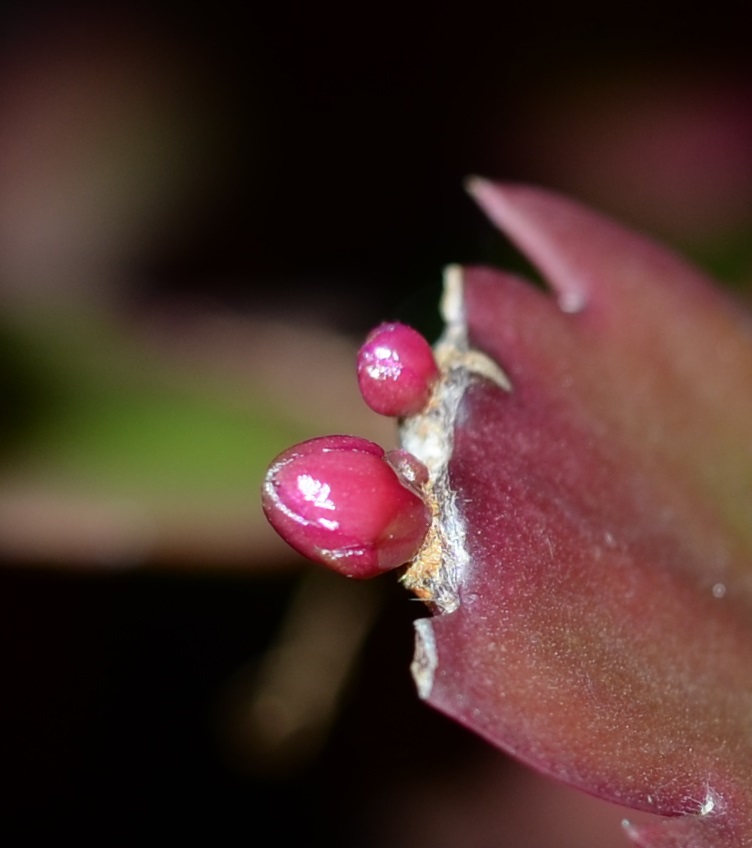
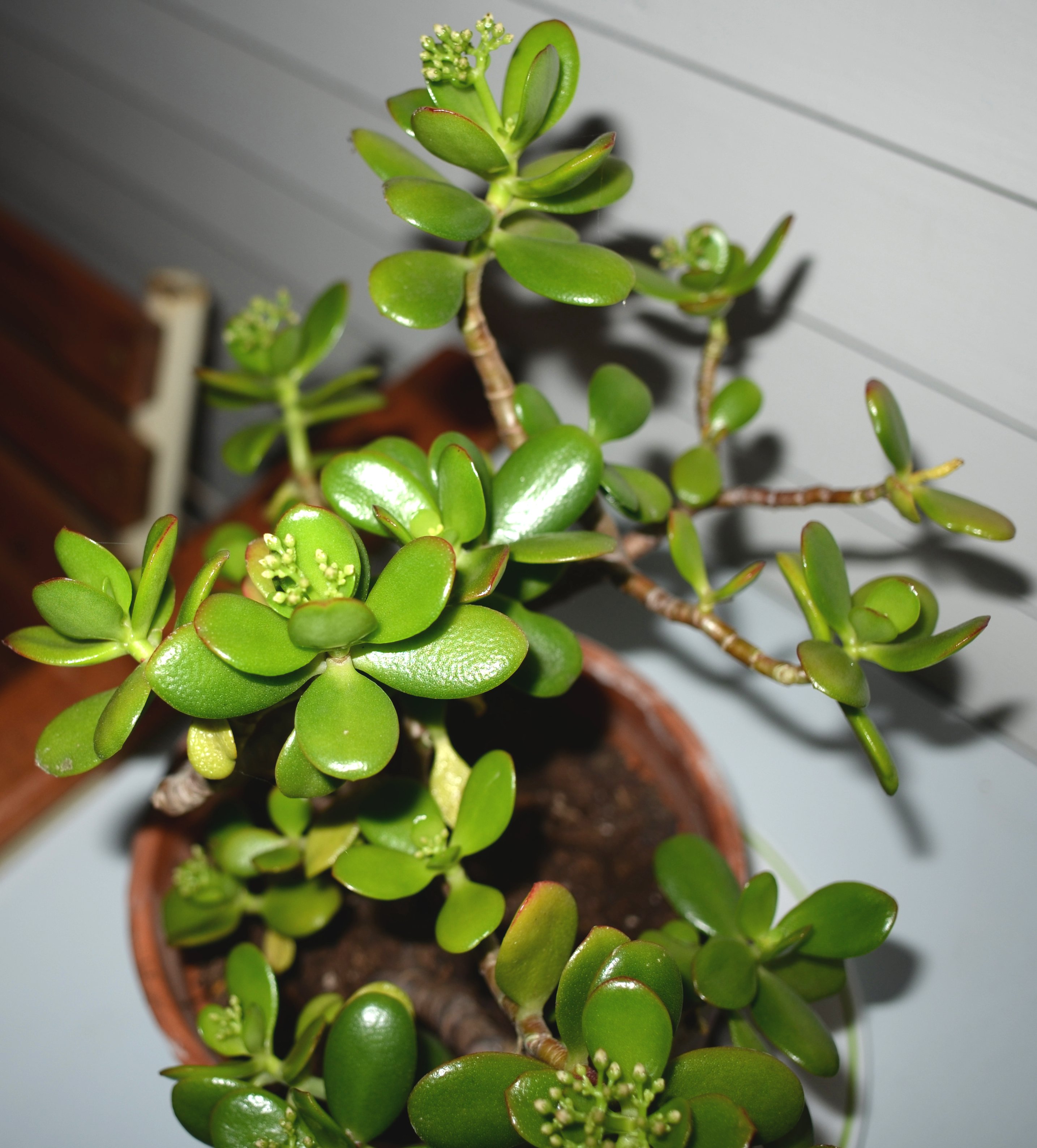
All the indoor plants have now been put back into the front porch, which I keep on low heat all winter. The Thanksgiving cactus, which I may have waited a tad too long to rescue, nevertheless has some magenta buds. And son of Jadesy, the arm I cut off of the humongous jade plant before moving it to a larger home, has lots of tiny buds too. I didn't know that some jade plants will bloom until I saw them along the footpath up to the university in Cape Town. We got very lucky with this one - none of the others I've ever had have ever set buds. But it will bloom if it has been allowed to stay outside until well past mid-October. Last year it came in too soon and only partially bloomed.
Remember that there is information in the name of the file for each image. You can see it by mousing over the image - look at the lower left of the screen.
I would try clicking on the image. If the little "+" sign appears, it means you can enlarge again. While it is in "+" mode, click on something you want to see more clearly and it will zoom to that section. Then the info is displayed in the address line above. If the image has been cropped
so that clicking on it doesn't result in a larger picture, you can always hit control plus to increase the size of the image.
No bees this week, so what about beetles? Well, yes, there were a few. Here is most likely one of the asian ladybirds, taken while trying to get into the workshop, which is now warmer than outdoors. Another type of ladybird, possibly Thalassa montezumae, has two red spots on its glistening black wings. And last, one of the carpet beetles that I've never seen in a carpet.
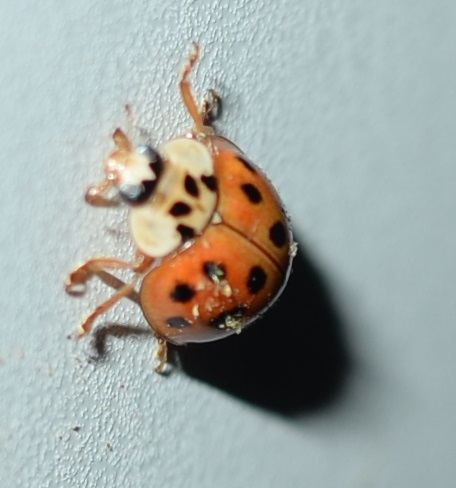
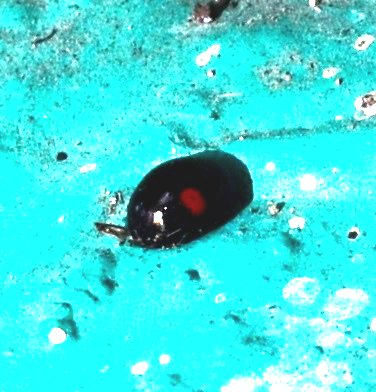
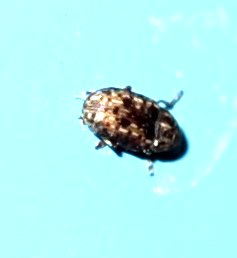
You knew, of course, that we would see a couple of assassin bug nymphs, so here's one of those. We also had one of the greyish brown ones, but more rewarding - an adult that I hadn't seen before. It is an assassin bug called Acholla multispinosa.
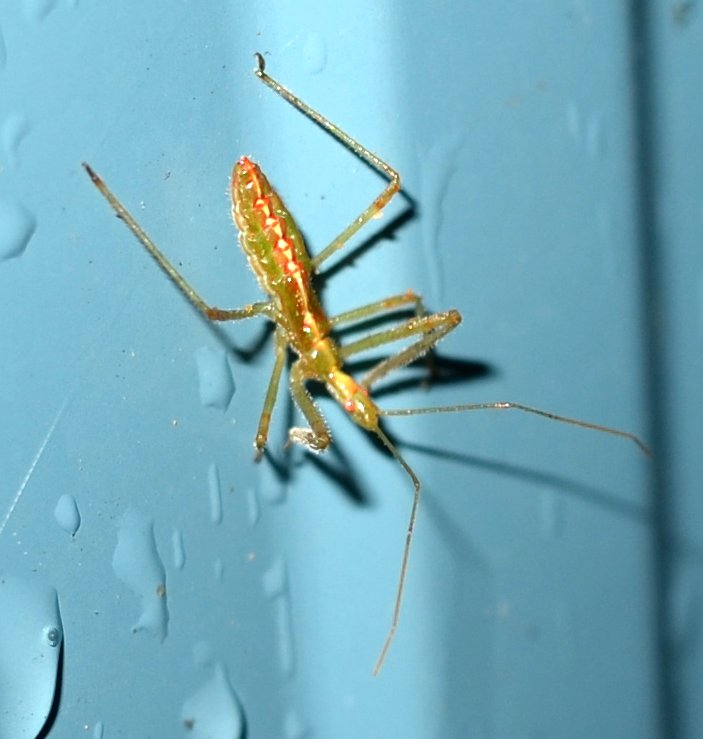
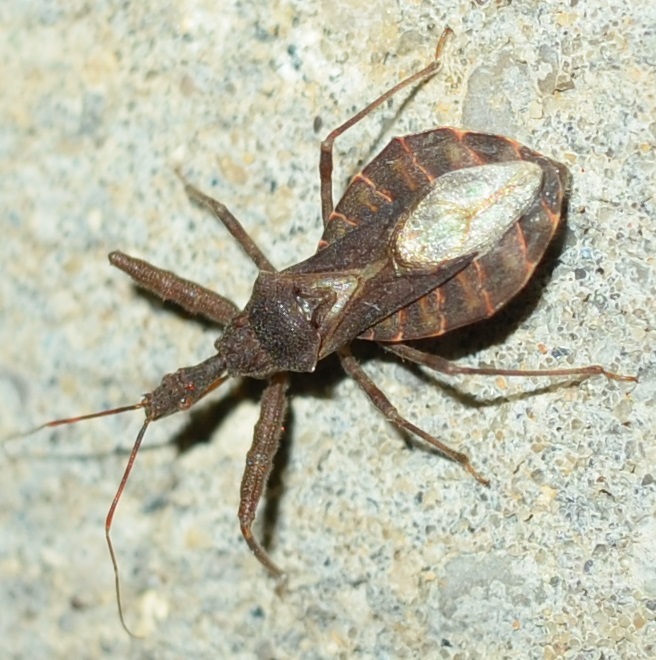
Leafhoppers seem impervious to the rather chilly weather we had this past week, considering their tender bodies. Yes, we still had the Arboridias and the Eratoneuras. But there was one new one, which I have probably labeled wrong, as the blueberry leafhoppers don't seem to live in Michigan, but at least the Scaphytopius genus is right.
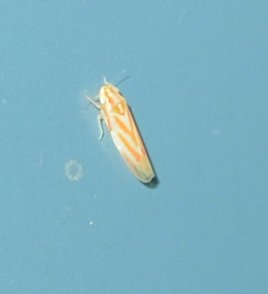
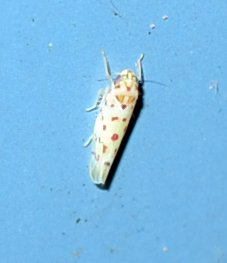
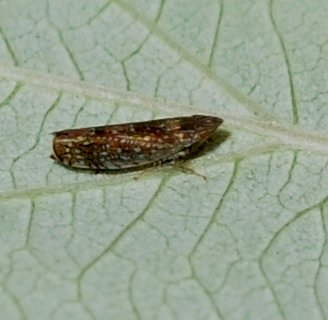
The little spittlebug was still here. So was this reddish fat bug nymph, only a couple of millimeters long, but very hardy it seems. This flat black bug was still here and still unidentified.
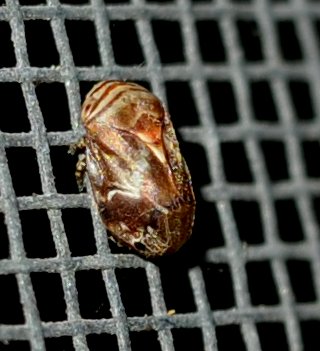
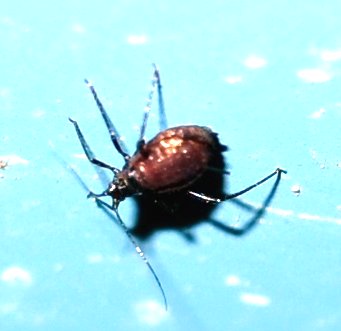

Stink bugs may or may not stink (some do, some don't), but they also seem hardy. This one you've seen before, but I wonder about the second one. Is it a different stage from last week's green and brown one or is it a separate species? I vote for the separate species. Oh yes, and this western conifer seed bug is still here.
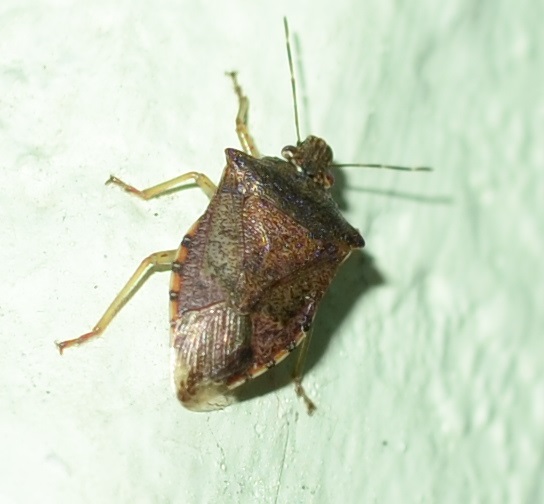
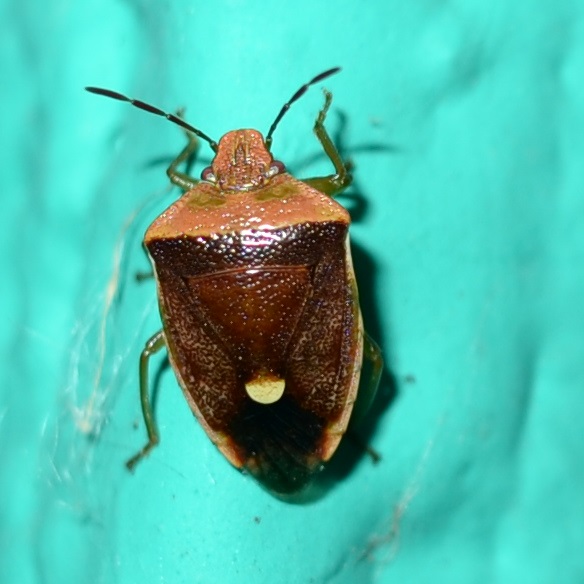
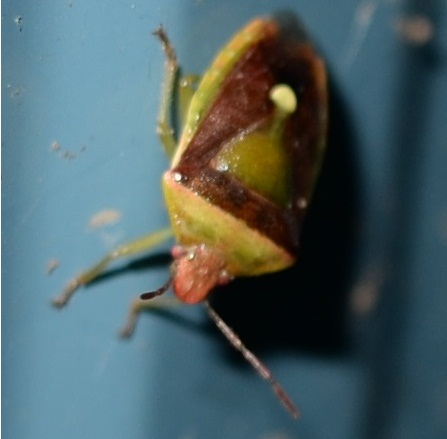
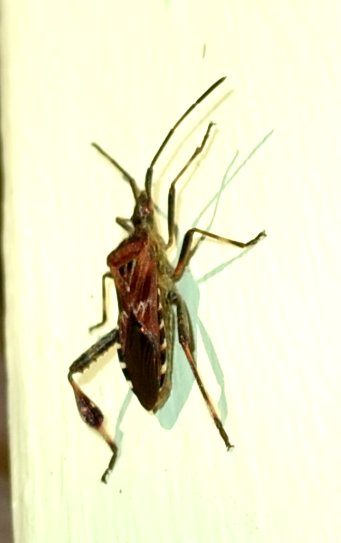
Naturally no butterflies, but in a crevice in the brickwork I found this white chrysalis. I wonder if it will live through the winter like that! Although the lacewings are not near relatives of butterflies, this week I conveniently found two - the brown and the green lacewings! Too bad the green one was high up on the porch ceiling so you're seeing just a promissory note of this one.
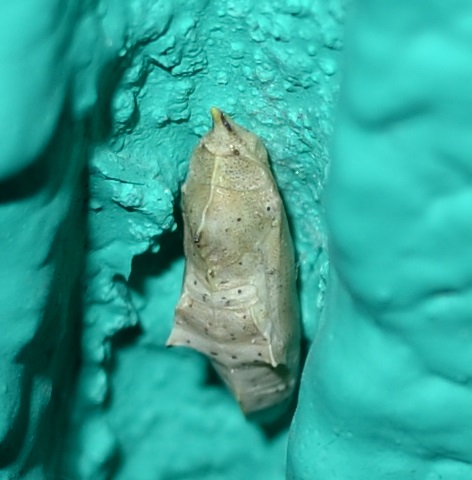
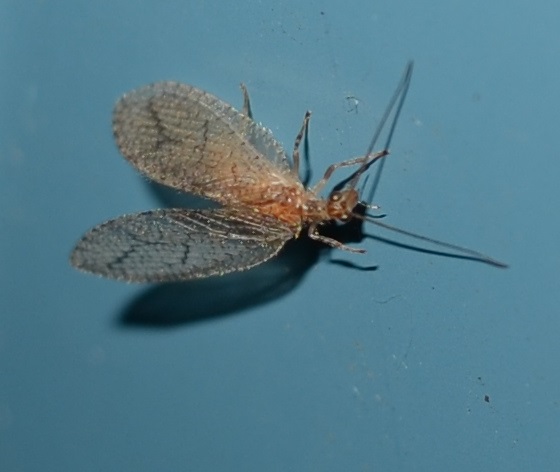
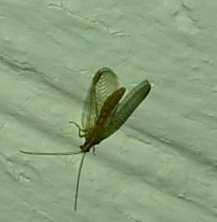
We're even left with fewer and fewer obvious flies. The fall March flies are still to be found in little gnat-like clusters. This little fellow looks like a funny mosquito (note the feathery proboscis).
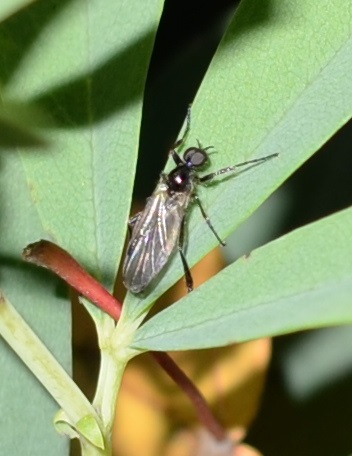
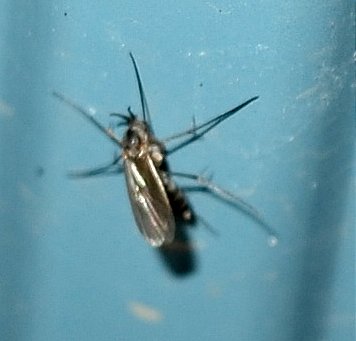
It's a good thing we had a number of kinds of bark louse (not a kind of louse). Here is a very cloudy picture of one of them - you can sort of tell by the wing shapes. Then one you've seen before - transparent and black wings. And now a new one - with golden-yellow highlights.
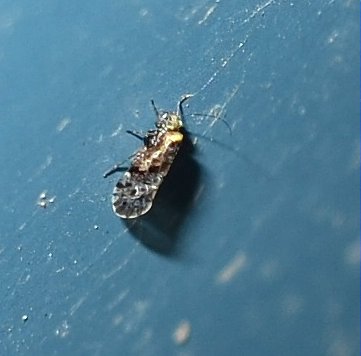


Guess what? We have looked at all the players except the spiders and the wasp. (only one kind of wasp). Here is the only harvestman I saw this week. This tiny baby 6-spotted orbweaver was still out there on Monday. And the baby (1 or 2 millimeters)common house spiders are still plentiful. Last, a bit larger one.
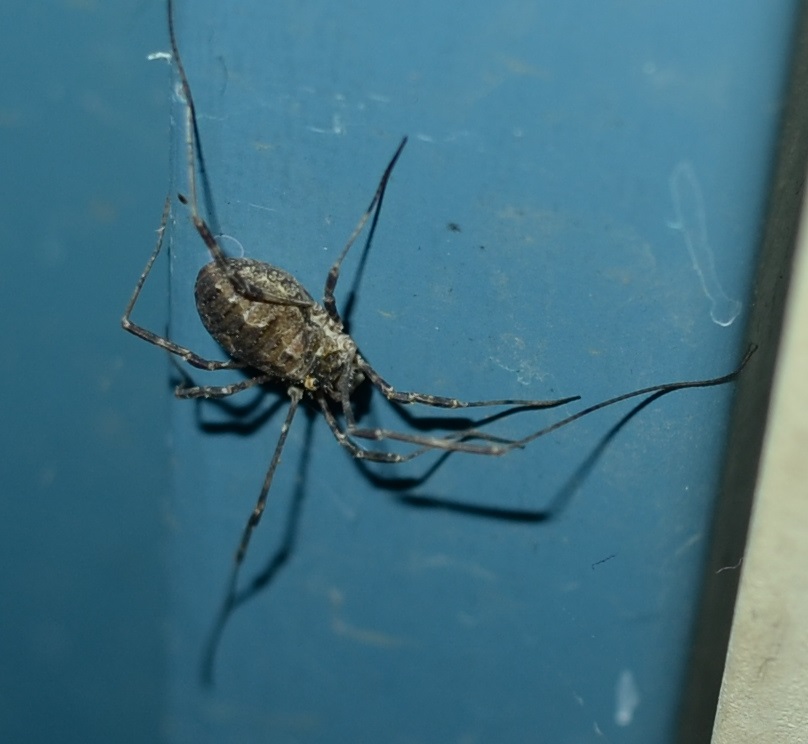
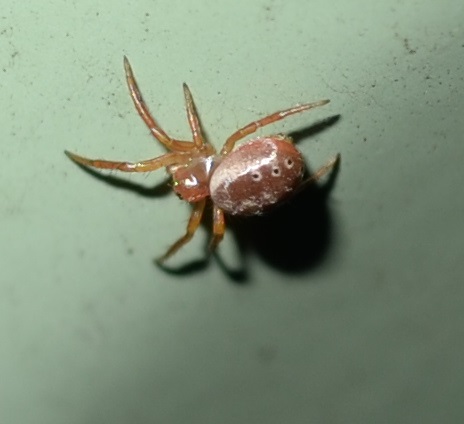
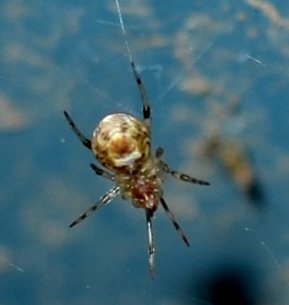
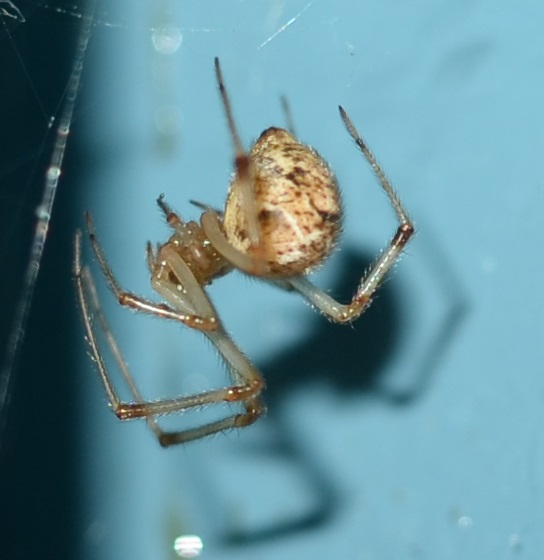
Among crab spiders, we saw one ground crab, which tends to be huskier, including its legs; and this northern crab was also on the shop wall, unusual for the northern crabs.
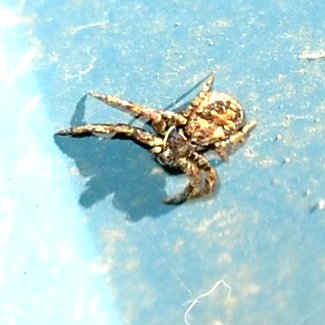
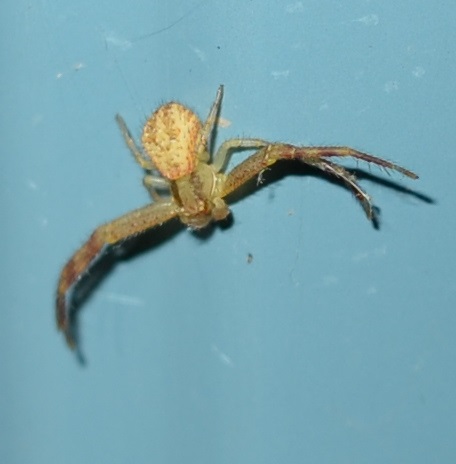
I'm suspecting that several of the spiders that I marked "mystery" were really grass spiders. The first one is. The second I'm not so sure about. It is quite noticeably male with those huge pedipalps.
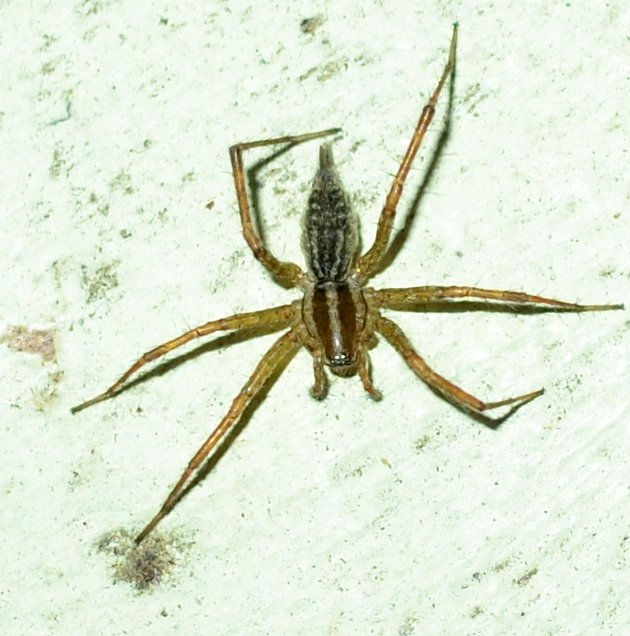
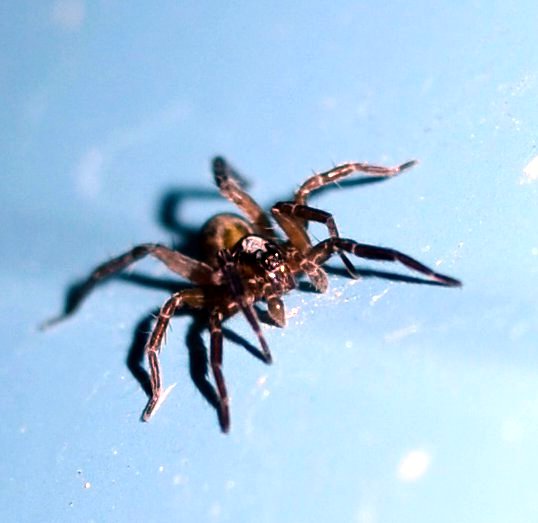
It wouldn't be much of a week if we didn't get a good look at the little jumping spiders. Here is one that seems to be Phidippus purpuratus (purplish). It looks more like black to me, but this was the closest one I saw in the whole jumping spiders search group. I love the big green eyes on this little fellow. And the winner is: the tiny spider who is busily trussing up this gigantic centipede.
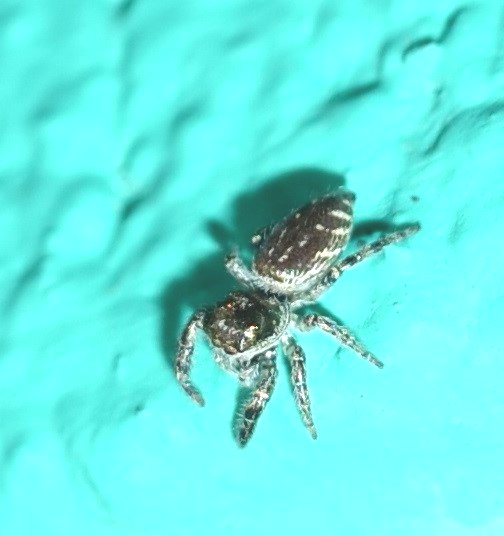
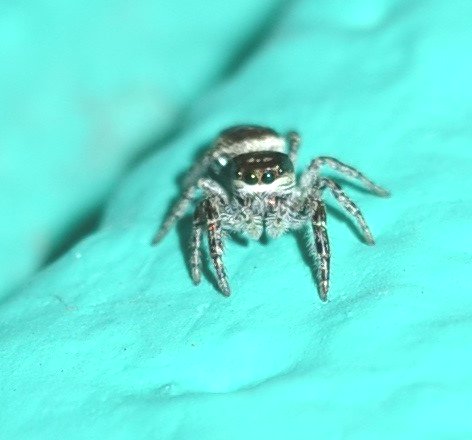
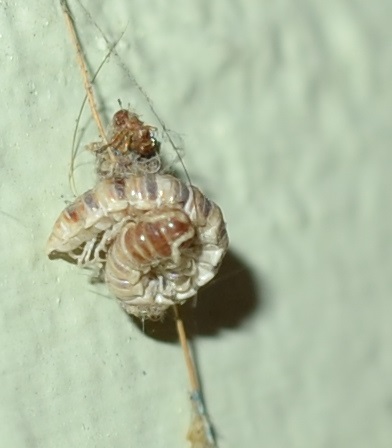
I was over at the music building the other day and waiting for my lesson. This very tired wasp was trying to walk in the thick carpet and very slow at it. It did manage to turn every time I came near with the monster camera. It is apparently one of the Polistes group, and maybe a variant on Polistes fuscatus, the northern paper wasp. Its face is reddish, unlike the male yellowish face, so I am guessing it is a female Polistes fuscatus. They do vary wildly. When my lesson was over I went back to the place it had been, but apparently someone had stamped on it and it was quite dead. I took it home to take a couple of close pictures. The rightmost image was taken this way. You can see the red face (matches her red eyes).
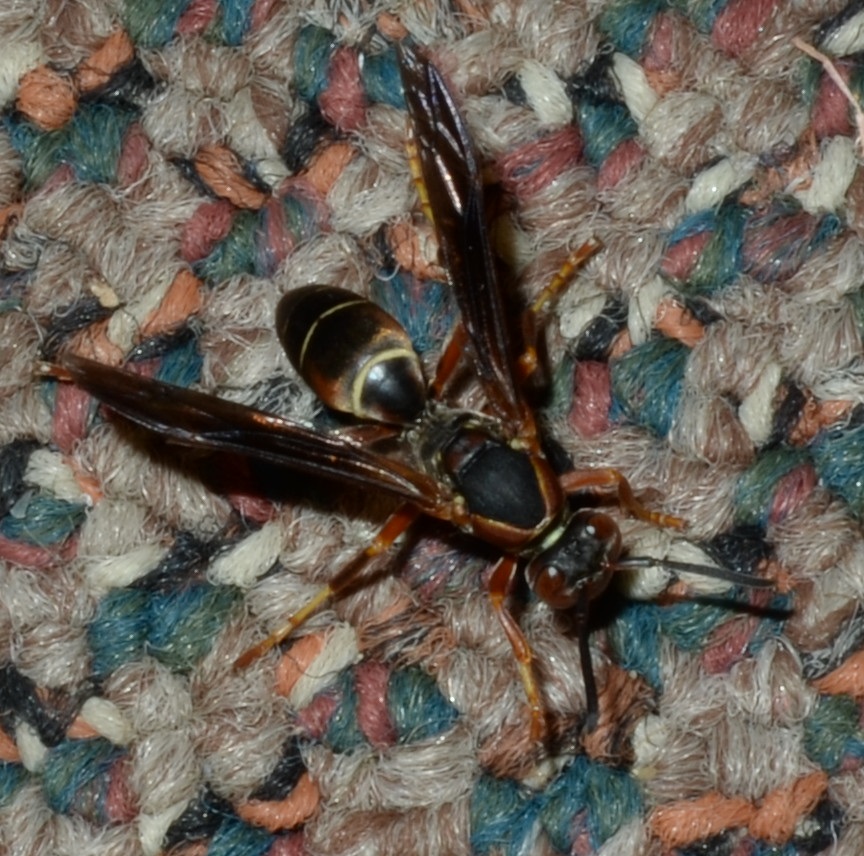

That's it for this week. Not too bad considering how chilly it has been. These creatures seem to think if they just survive, it will get warm again. They may very well not see the warmth when it comes in a few months but I'm sure they have provided a place for their children to live to see it. There may be a few critters next week - we'll see what we can do about recording them.
Spoiler alert! Today the big bugs were out. I saw two western conifer seed bugs and a big green stinkbug as well as a number of smaller stinkbugs. You get to see them next week!
Back to October 25
On to November 8
Back to 2015 menu
Back to main menu
copyright Martha O'Kennon 2015






































